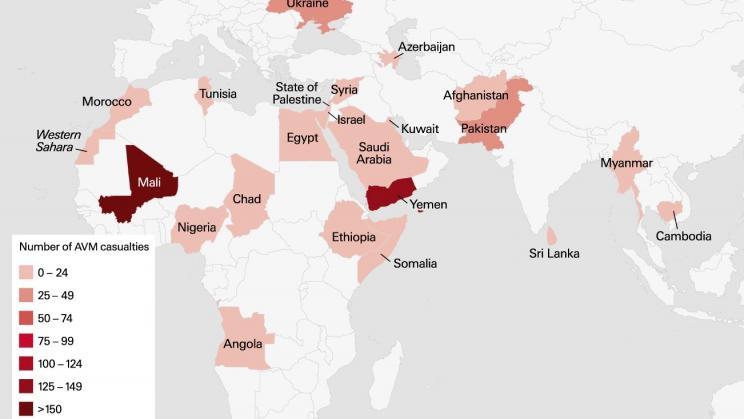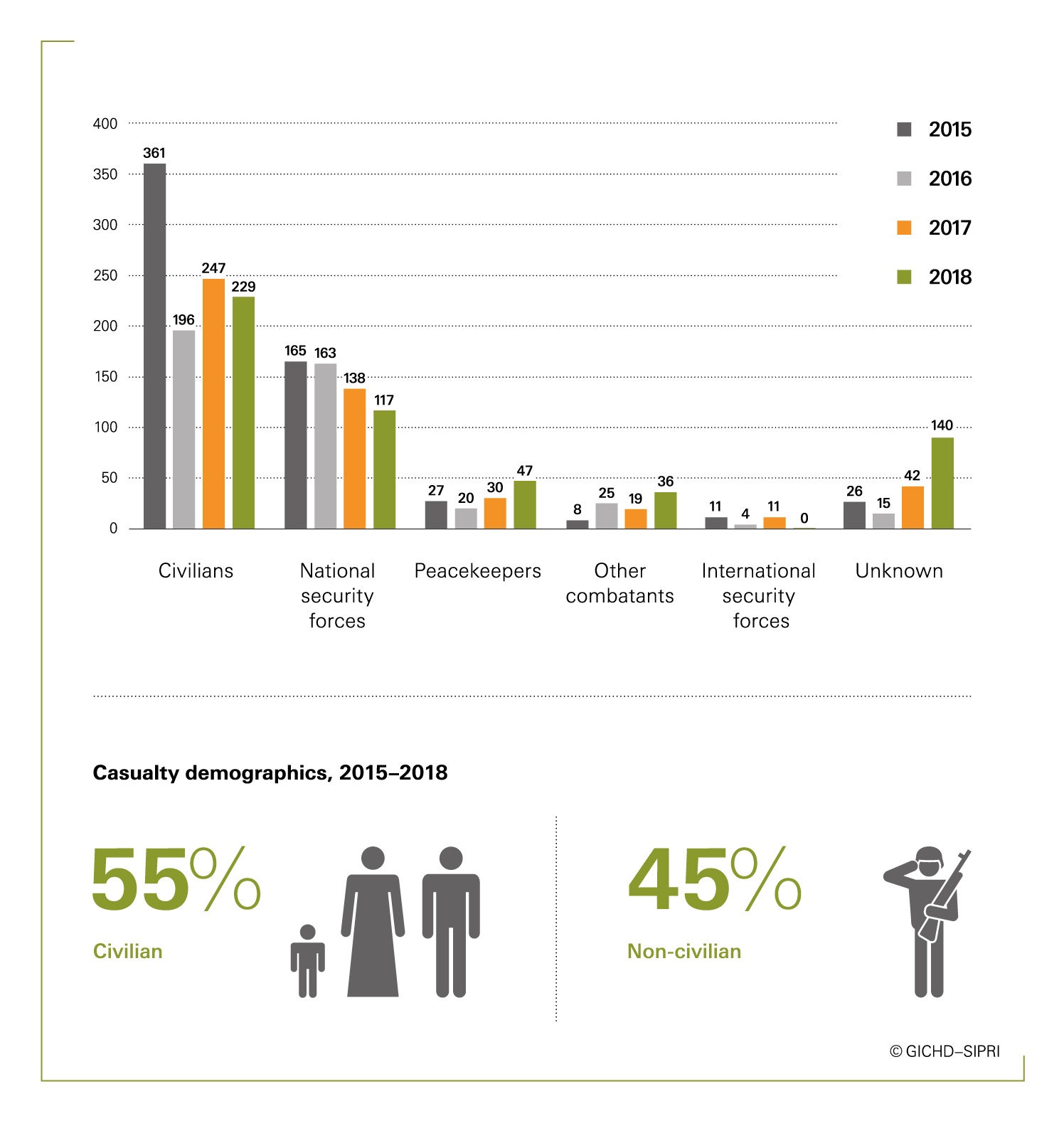
The Geneva International Centre for Humanitarian Demining (GICHD) and SIPRI have released a new global report on anti-vehicle mine incidents in 2018.
The report finds 199 incidents related, or suspected to be related, to anti-vehicle mines (AVMs) in 23 states and territories, representing an 18 per cent increase in incidents from AVMs compared with 2017. These incidents caused 569 casualties in 2018 (226 dead and 343 injured). The number of incidents is the highest since GICHD–SIPRI data collection began in 2015.
Over the four years from 2015 to 2018, the GICHD and SIPRI recorded 727 AVM incidents that caused 2077 casualties—519 people were killed or injured on average per year. This figure is significantly higher than the average of 357 AVM casualties per year from 2011 to 2014.
Yemen, Mali, Ukraine and Pakistan were the four states with the most recorded AVM incidents in 2018. Yemen and Mali alone accounted for 64 per cent of total incidents globally. Despite the reduced number of incidents in 2019, Ukraine still features among the top three affected states for the fourth consecutive year.
Mali, Yemen, Pakistan and Ukraine were also the states with the highest number of casualties, representing 82 per cent of global numbers in 2018. Mali recorded the highest number, with 254 casualties. Notably, civilian casualties in Mali increased more than threefold from 2017 to 2018, and 85 per cent of the civilian casualties in the country were found in central Mali in 2018.

About the report
The report analyses disaggregated AVM incident data collected in 2018, based on joint research by the GICHD and SIPRI, and follows up on similar reports examining AVM incidents in 2015, 2016 and 2017. This collection of data over four consecutive years allows for an initial comparative analysis of, and identification of trends in, the humanitarian impact of AVMs on a global scale. The report also contains several case studies, such as Yemen and Western Sahara, placing AVM impact in its specific context. Detailed and geo-referenced data for each incident is available through interactive online maps.